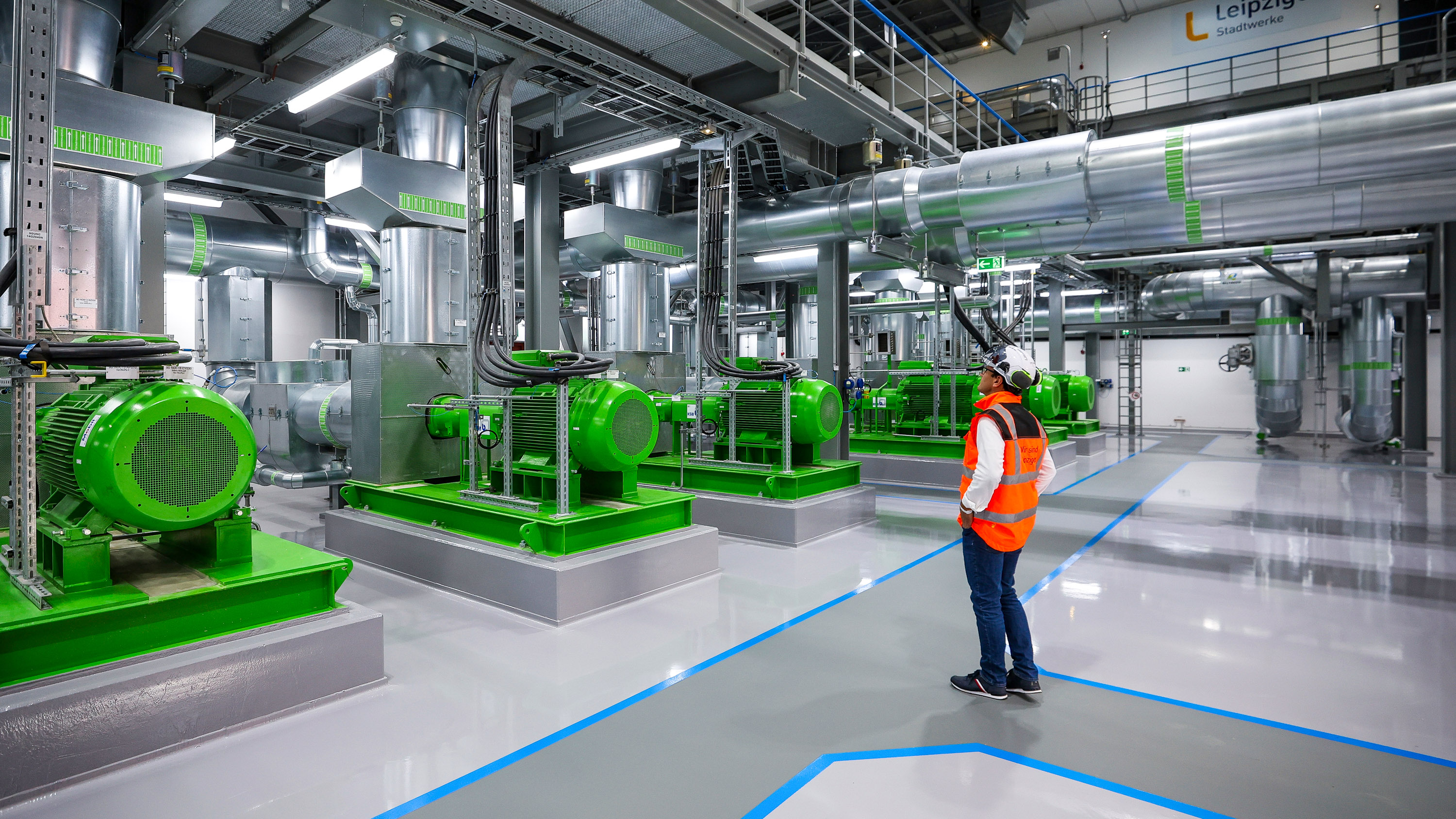www.technologyreview.com /2024/04/25/1091757/hydrogen-uses-ranked/Hydrogen could be used for nearly everything. It probably shouldn’t be.
Casey Crownhart8-10 minutes 4/25/2024Experts say it’s crucial to consider how the low-emissions fuel is used.
Germany's first hydrogen power plant began operation in late 2023.Jan Woitas/picture-alliance/dpa/AP Images
This article is from The Spark, MIT Technology Review’s weekly climate newsletter. To receive it in your inbox every Wednesday, sign up here.
From toaster ovens that work as air fryers to hair dryers that can also curl your hair, single tools that do multiple jobs have an undeniable appeal.
In the climate world, hydrogen is perhaps the ultimate multi-tool. It can be used in fuel cells or combustion engines and is sometimes called the Swiss Army knife for cleaning up emissions. I’ve written about efforts to use hydrogen in steelmaking, cars, and aviation, just to name a few. And a new story for our latest print issue explores the potential of hydrogen trains.
Hydrogen might be a million tools in one, but some experts argue that it can’t do it all, and some uses could actually be distractions from real progress on emissions. So let’s dig into where we might see hydrogen used and where it might make the biggest emissions cuts.
Hydrogen could play a role in cleaning up nearly every sector of the economy—in theory. The reality today is that hydrogen is much more of a climate problem than a solution.
Most hydrogen is used in oil refining, chemical production, and heavy industry, and it is almost exclusively generated using fossil fuels. In total, hydrogen production and use accounted for around 900 million metric tons of carbon dioxide emissions in 2022.
There are technologies on the table to clean up hydrogen production. But global hydrogen demand hit 95 million metric tons in 2022, and only about 0.7% of that was met with low-emissions hydrogen. (For more on various hydrogen sources and why the details matter, check out this newsletter from last year.)
Transforming the global hydrogen economy won’t be fast or cheap, but it is happening. Annual production of low-emissions hydrogen is on track to hit 38 million metric tons by 2030, according to the International Energy Agency. The pipeline of new projects is growing quickly, but so is hydrogen demand, which could hit 150 million metric tons by the end of the decade.
Basically every time I report on hydrogen, whether in transportation or energy or industry, experts tell me it’s crucial to be smart about where that low-emissions hydrogen is going. There are, of course, disagreements about what exactly the order of priorities should be, but I’ve seen a few patterns.
First, the focus should probably be on cleaning up production of the hydrogen we’re already using for things like fertilizer. “The main thing is replacing existing uses,” as Geert de Cock, electricity and energy manager at the European Federation for Transport and Environment, put it when I spoke with him earlier this year for a story about hydrogen cars.
Beyond that, though, hydrogen will probably be most useful in industries where there aren’t other practical options already on the table.
That’s a central idea behind an infographic I think about a lot: the Hydrogen Ladder, conceptualized and updated frequently by Michael Liebreich, founder of BloombergNEF. In this graphic, he basically ranks just about every use of hydrogen, from “unavoidable” uses at the top to “uncompetitive” ones at the bottom. His metrics include cost, convenience, and economics.
At the top of this ladder are existing uses and industries where there’s no alternative to hydrogen. There, Liebrich agrees with most experts I’ve spoken with about hydrogen.
On the next few rungs come sectors where there’s still no dominant technical solution for cleaning up emissions, like shipping, aviation, and steel production. You might recognize these as famously “hard to solve” sectors.
Heavy industry often requires high temperatures, which have historically been expensive to achieve with electricity. Cost and technical challenges have pushed companies to explore using hydrogen in processes like steelmaking. For shipping and aviation, there are strict limitations on the mass and size of the fueling system, and batteries can’t make the cut just yet, leaving hydrogen a potential opening.
Toward the bottom of Liebreich’s ladder are applications where we already have clear decarbonization options available today, making hydrogen a long shot. Take domestic heating, for example. Heat pumps are breaking through in a massive way (we put them on our list of 10 Breakthrough Technologies this year), so hydrogen has some stiff competition there.
Cars also rank right at the bottom of the ladder, alongside two- and three-wheeled vehicles, since battery-powered transit is becoming increasingly popular and charging infrastructure is growing. That leaves little room for hydrogen vehicles to make a dent, at least in the near future.
I’m not counting hydrogen out as a fuel for any one use, and there’s plenty of room to disagree on particular uses and their particular rungs. But given that we have a growing number of options in our arsenal to fight climate change, I’m betting that as a general rule, hydrogen will find its niches rather than emerge as the magic multi-tool that saves us all.
- Forums
- Political Debate
- Accelerate the World's Transition to Sustainable Energy - to fight Anthropogenic Climate Change
www.technologyreview.com...
Featured News
Featured News
The Watchlist
AFP
AFT PHARMACEUTICALS LIMITED
Hartley Atkinson, MD
Hartley Atkinson
MD
Previous Video
Next Video
SPONSORED BY The Market Online





